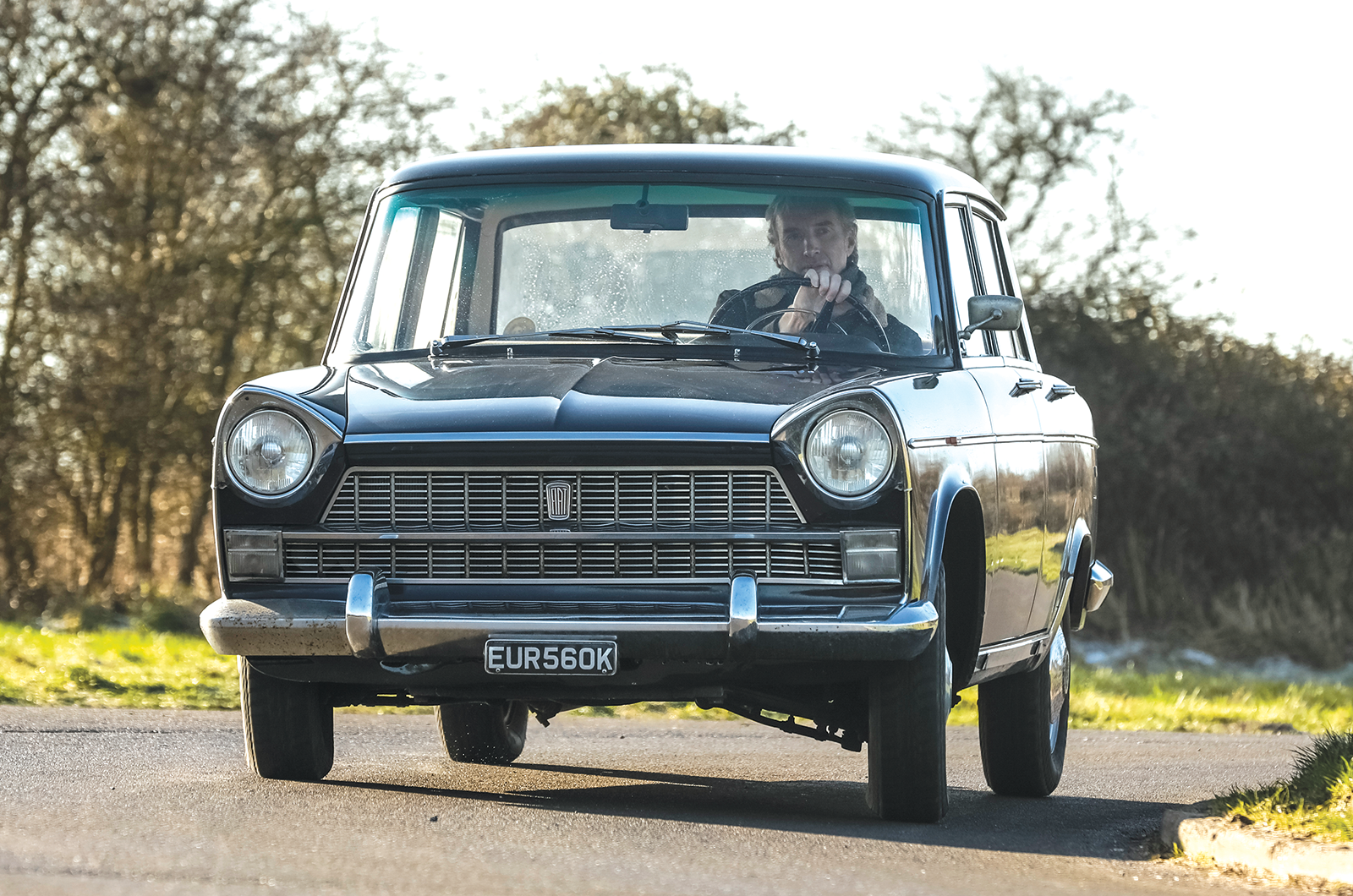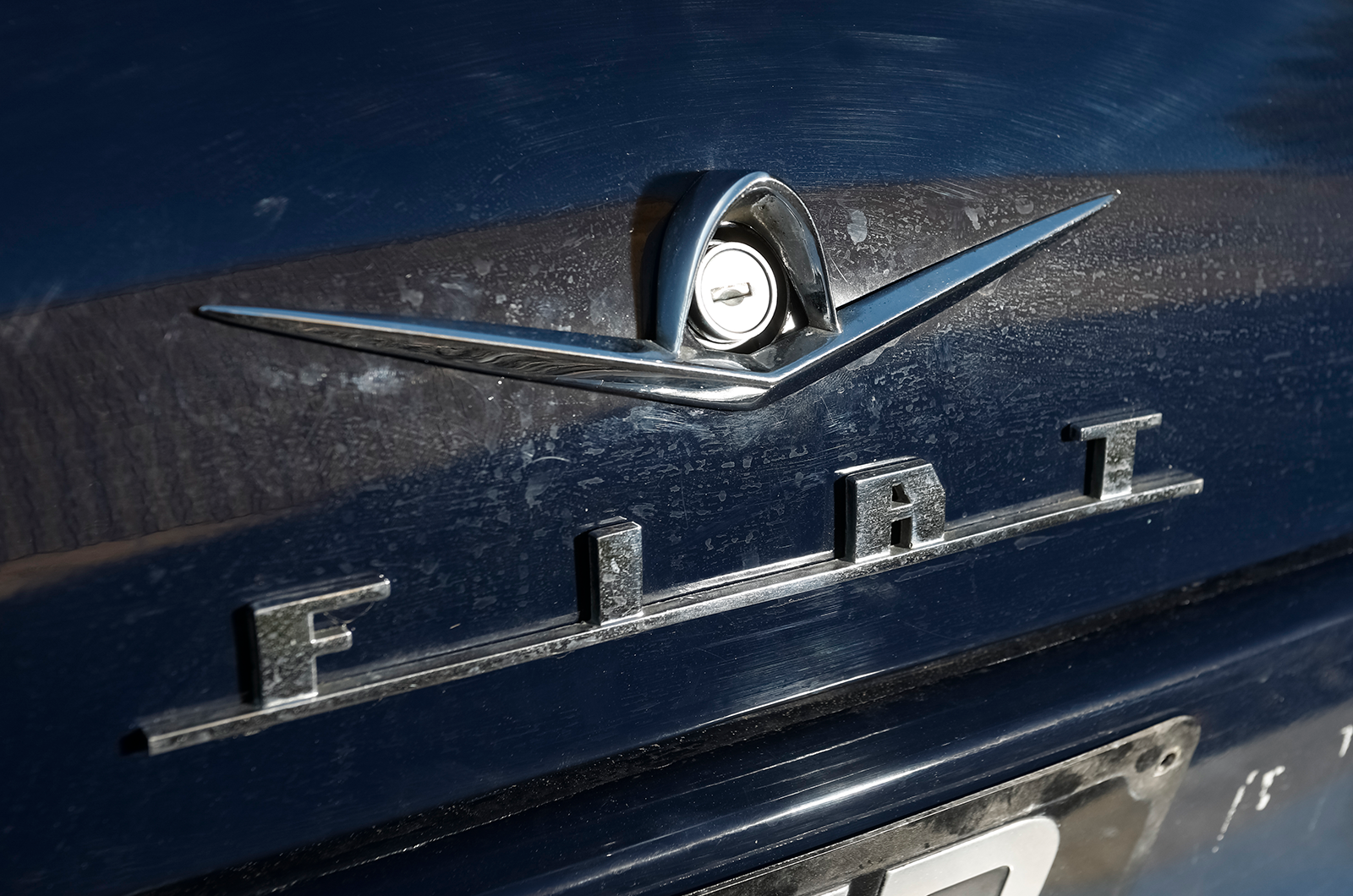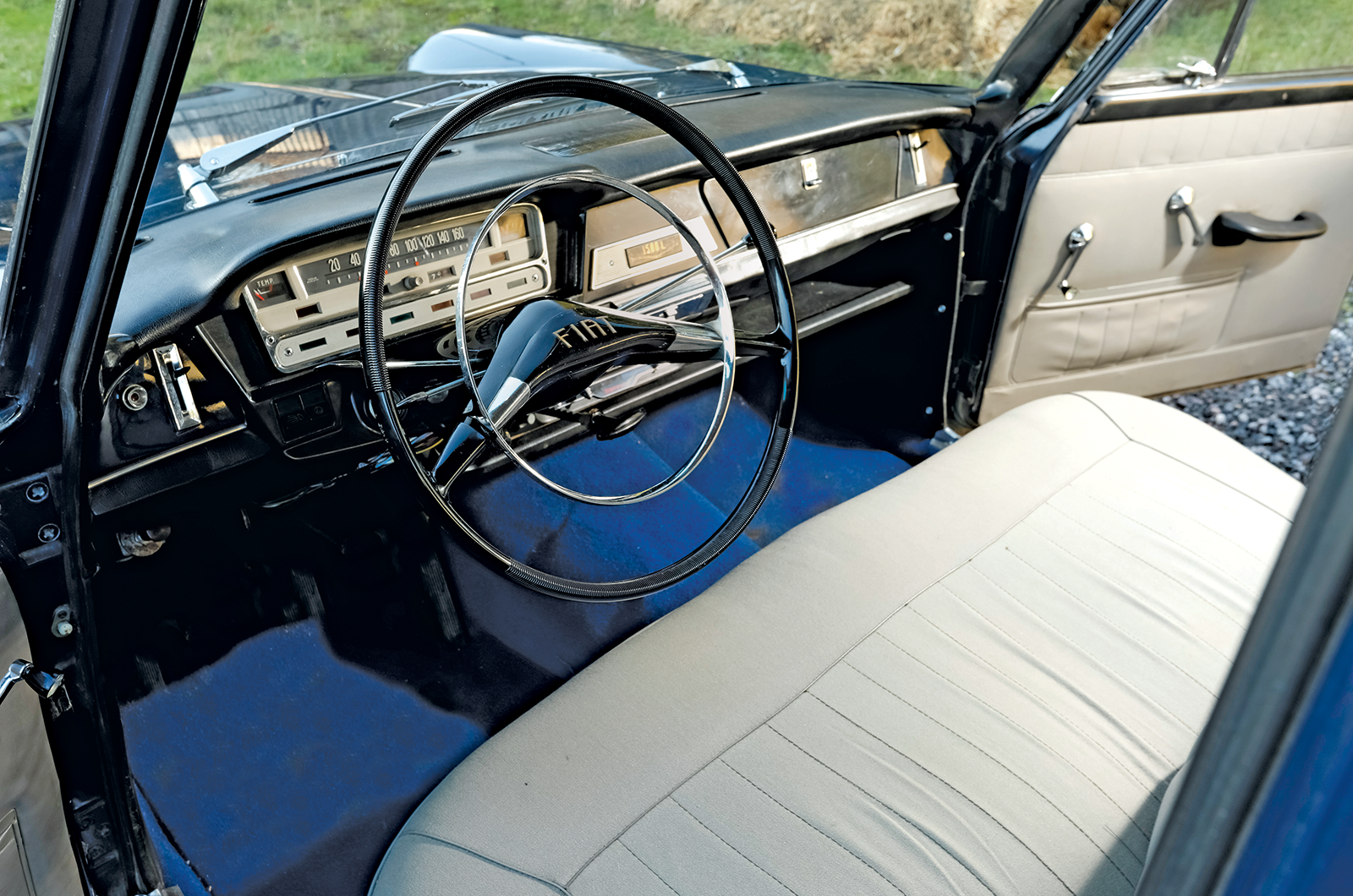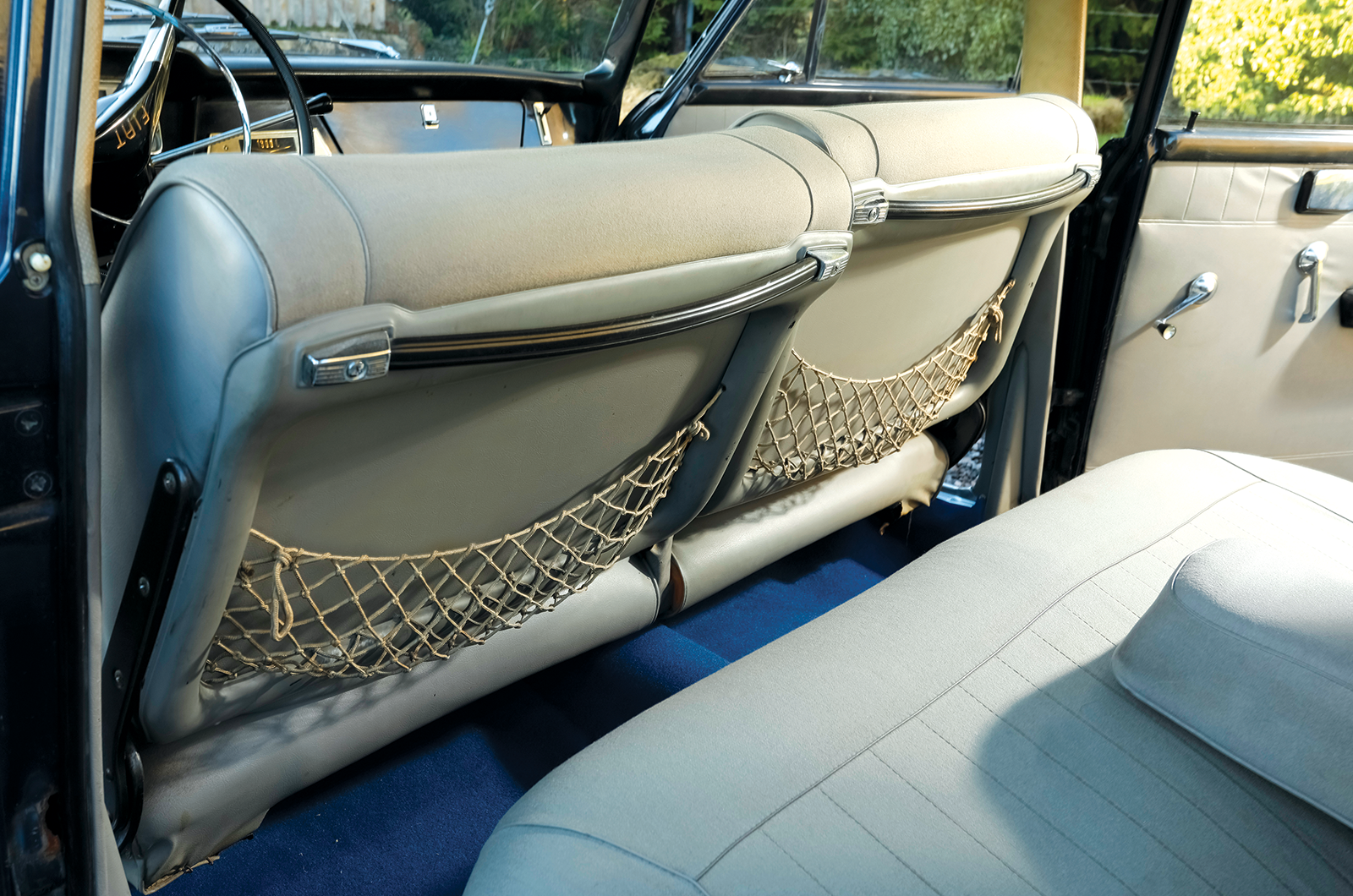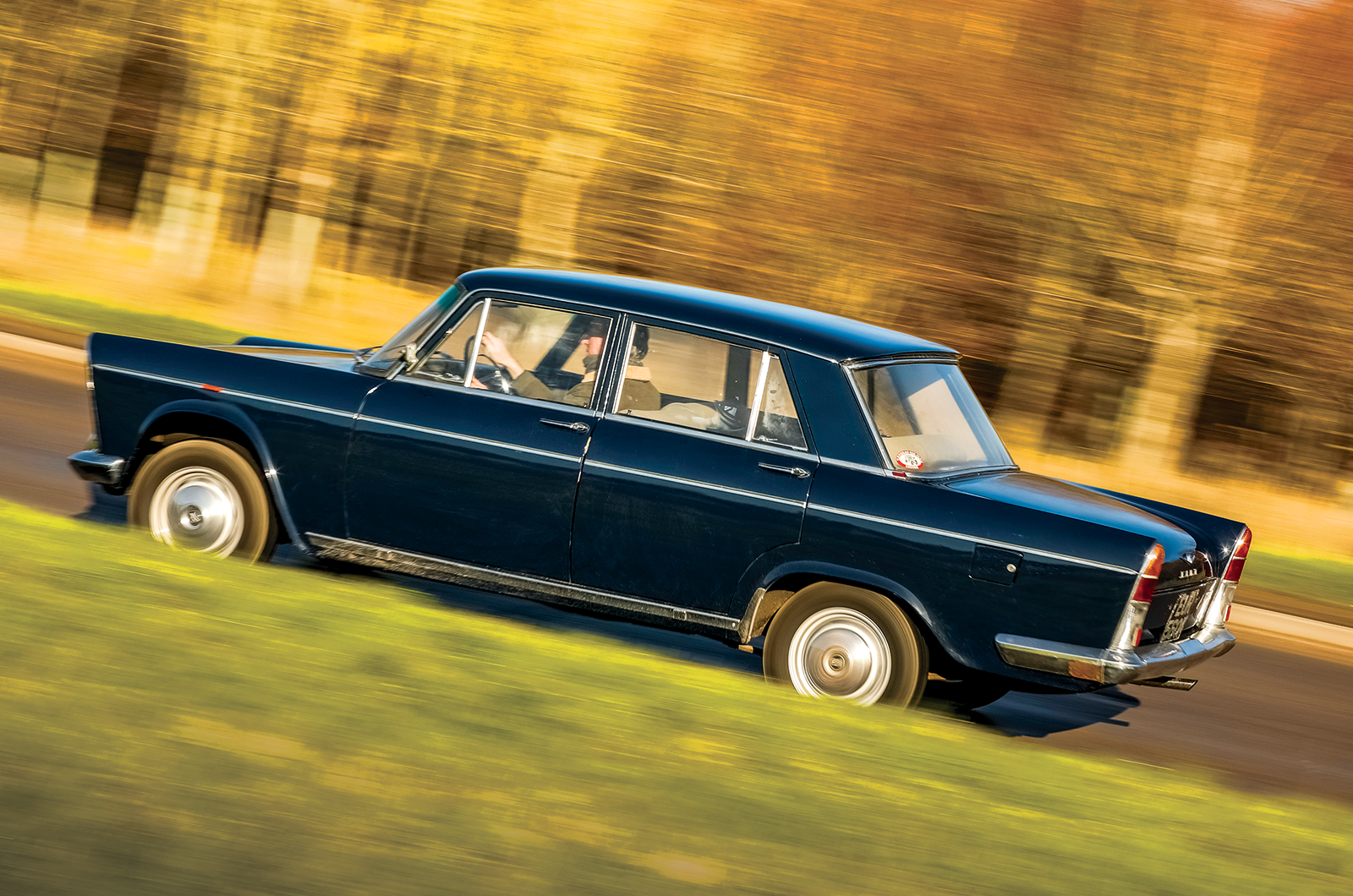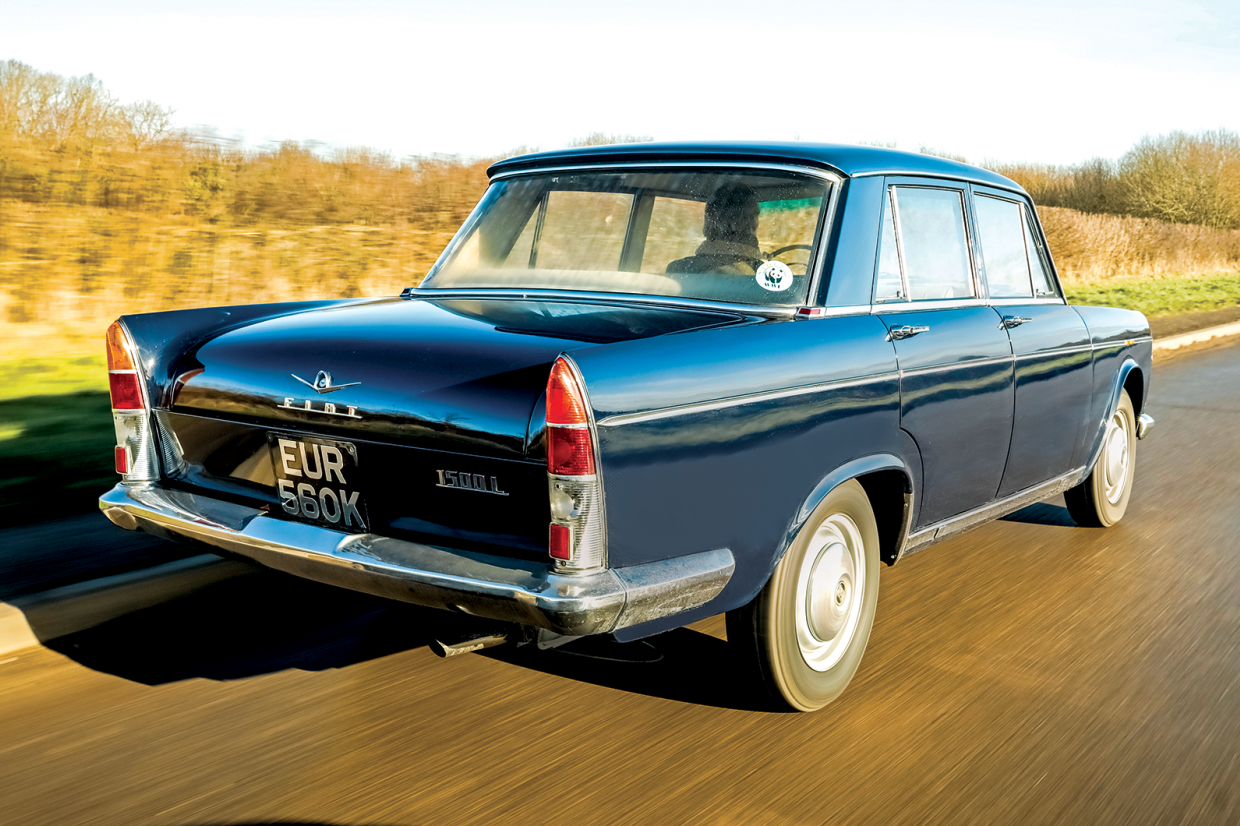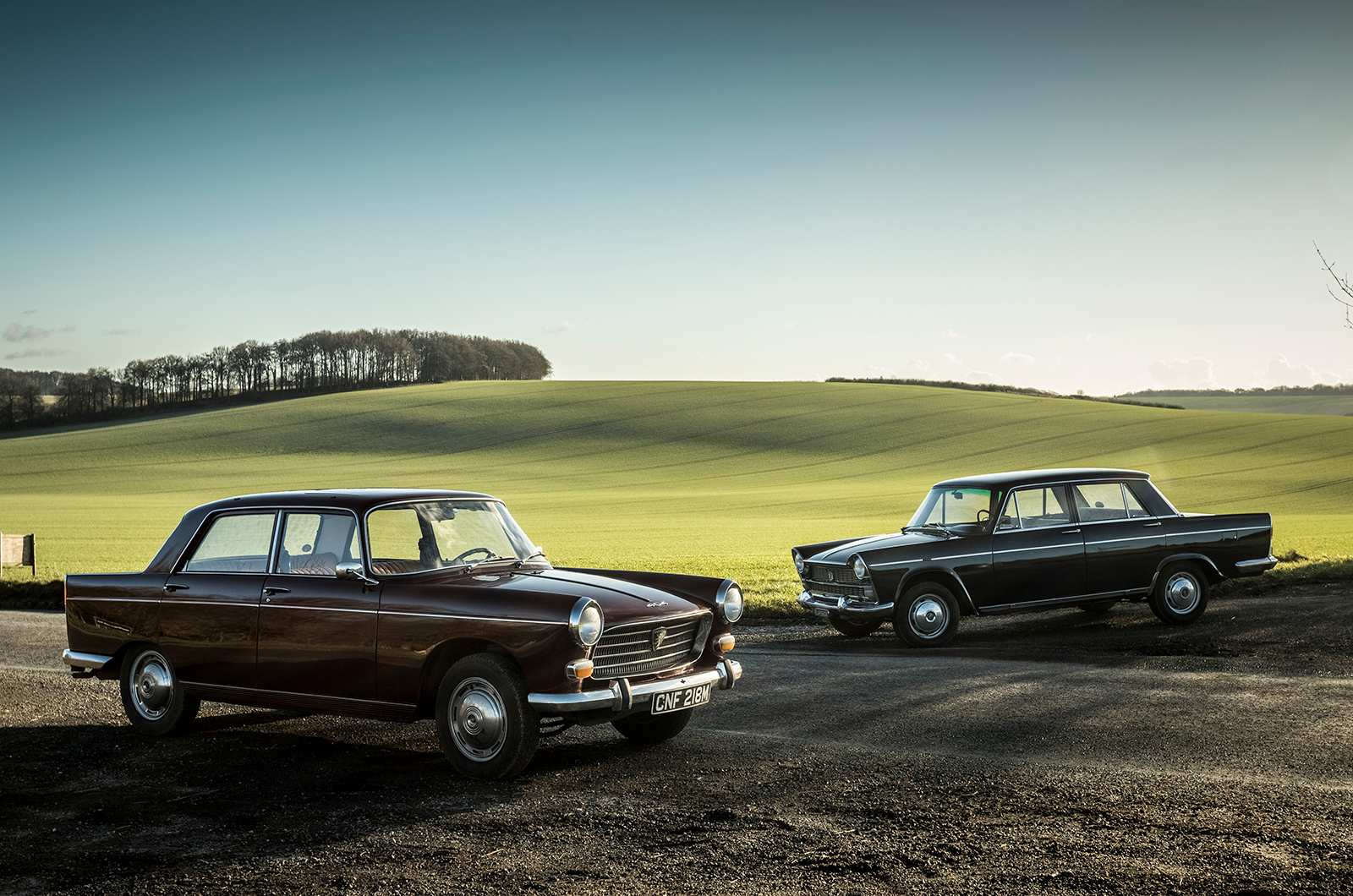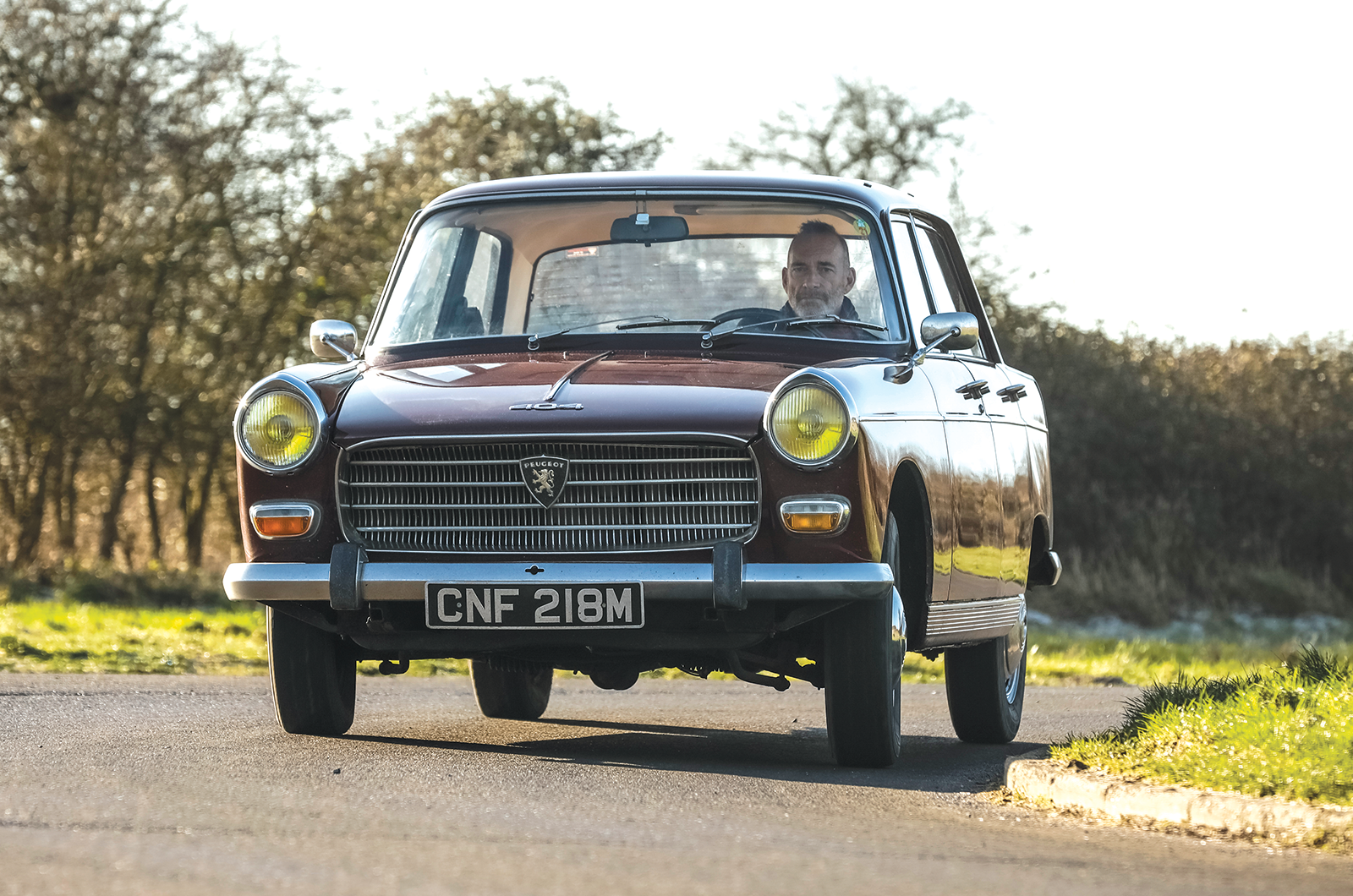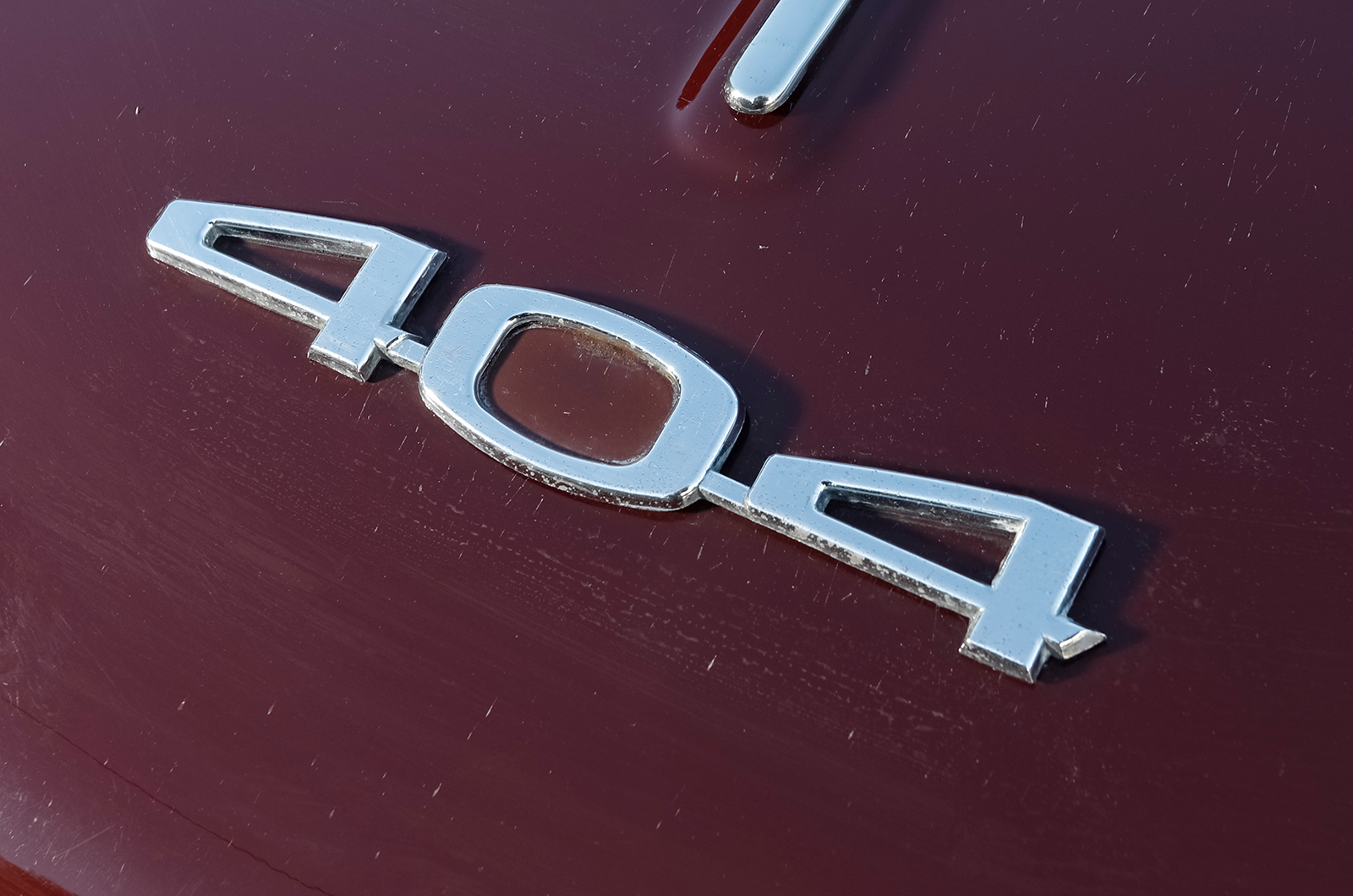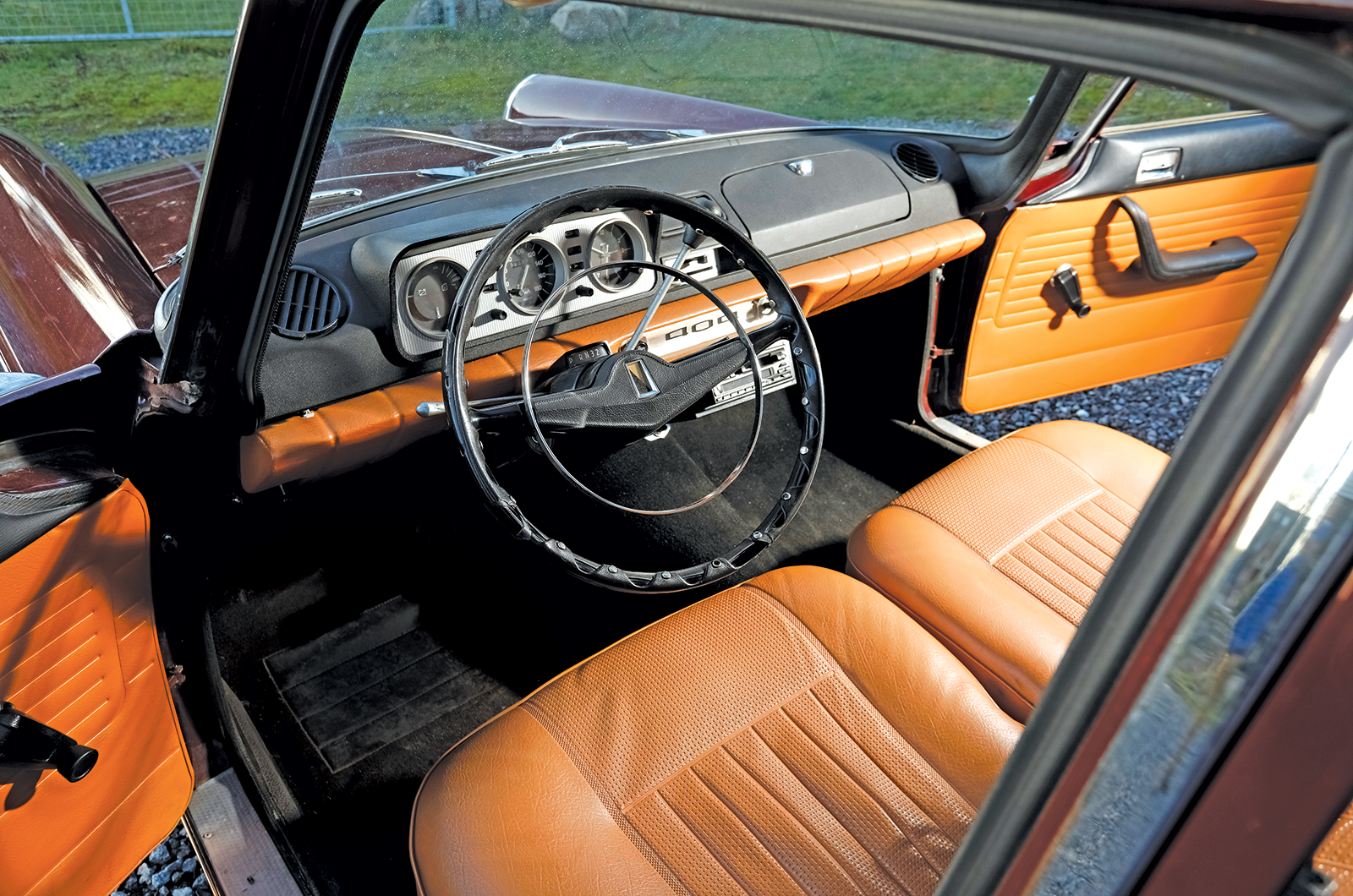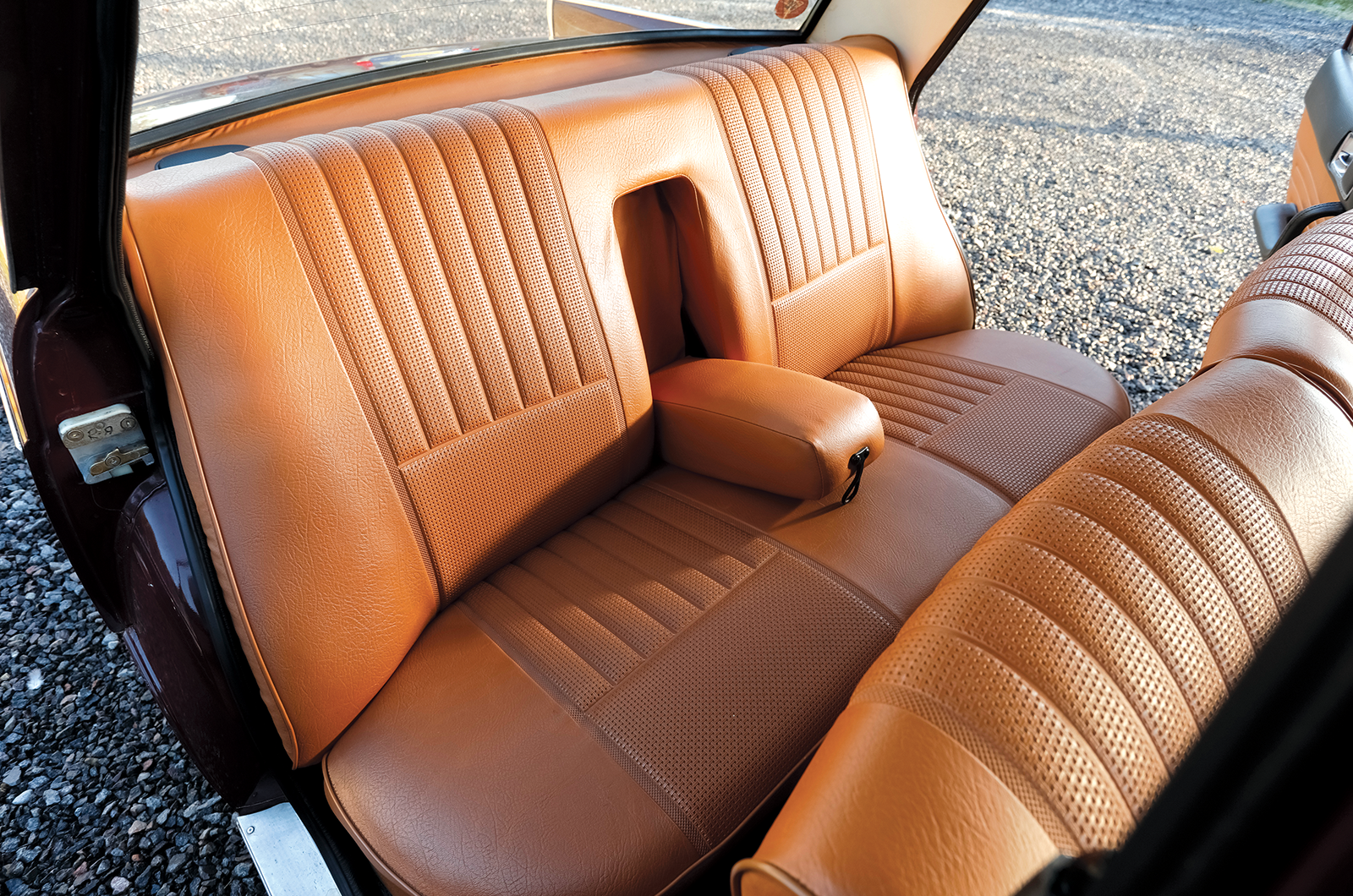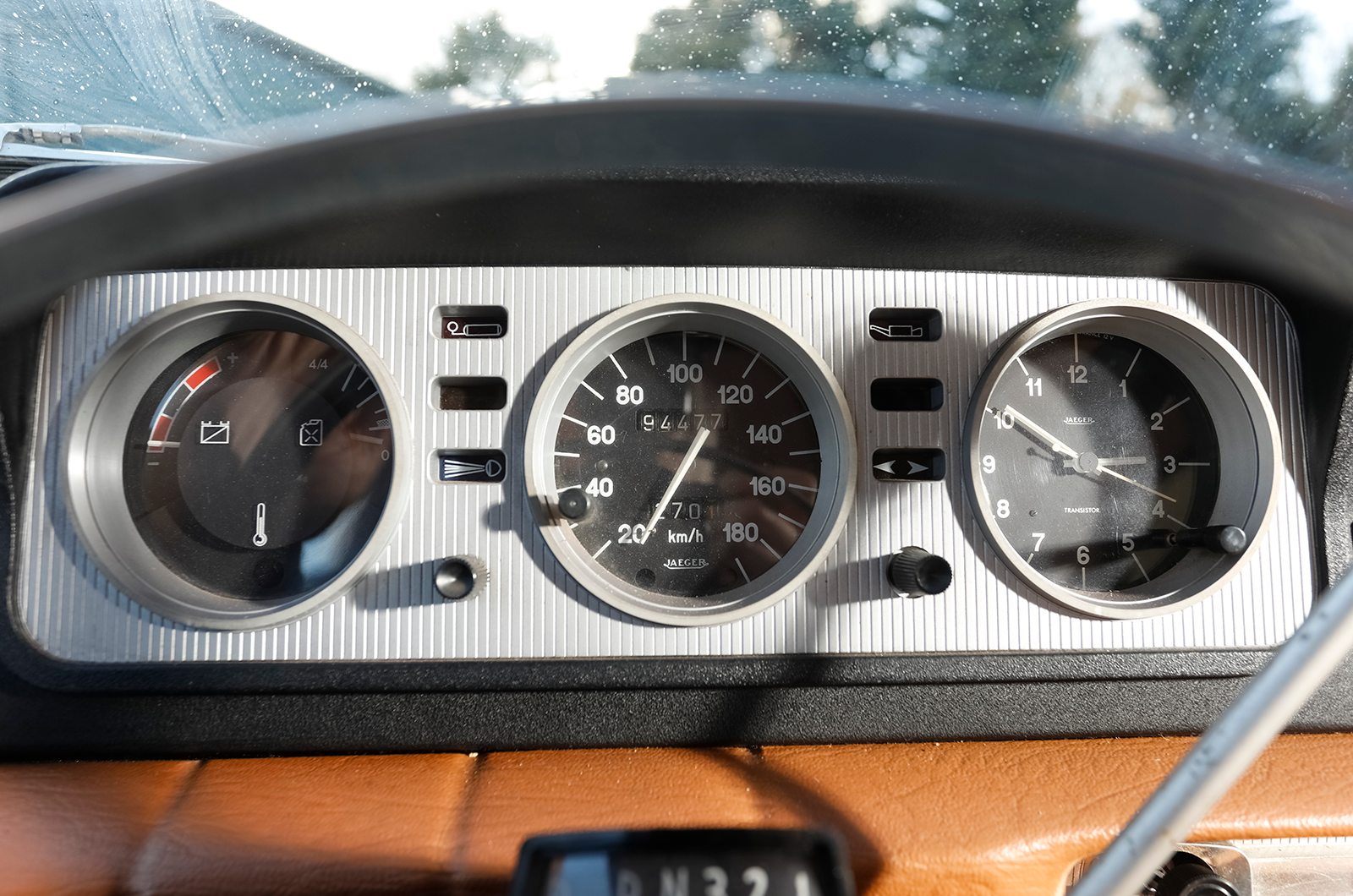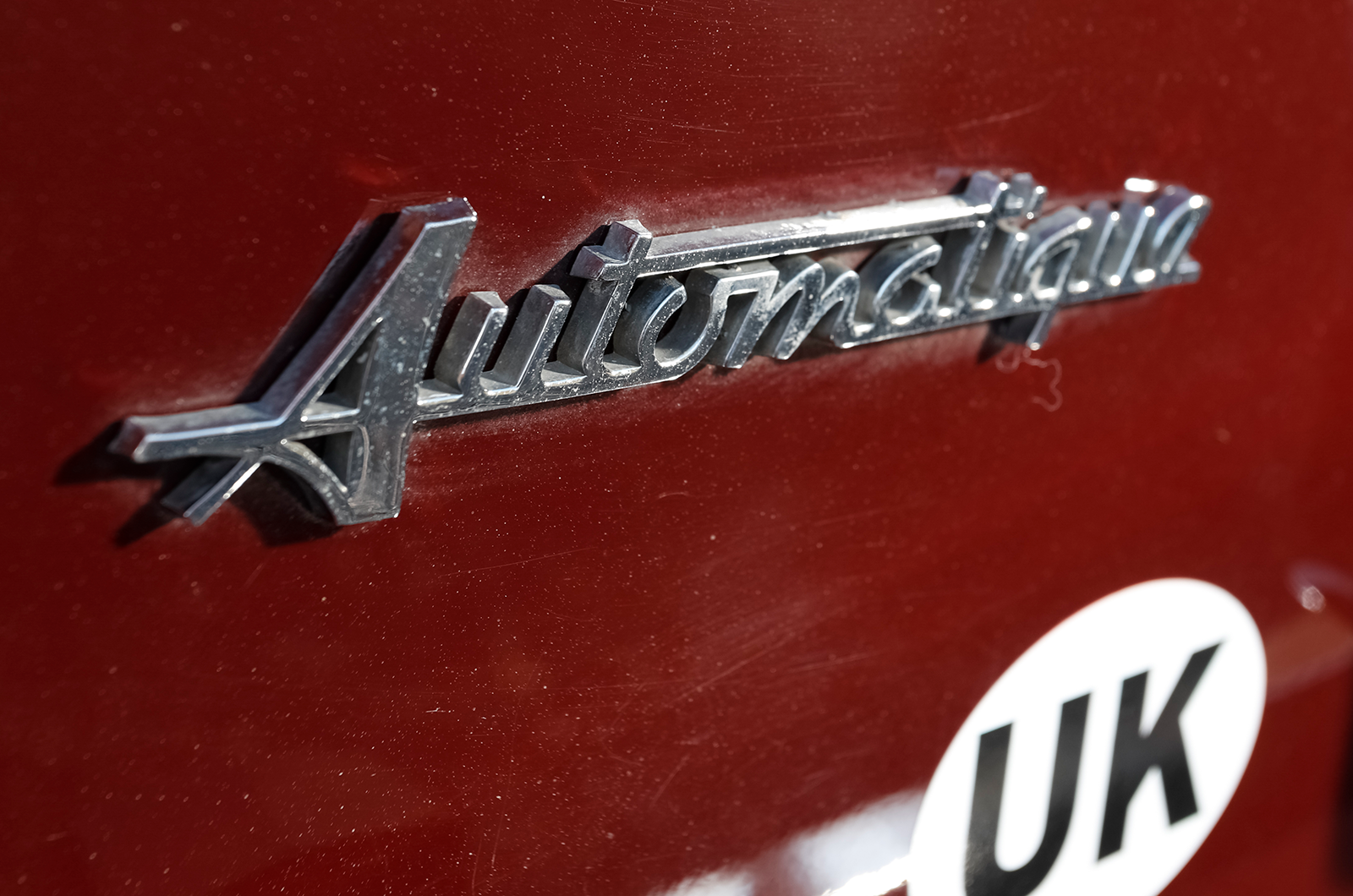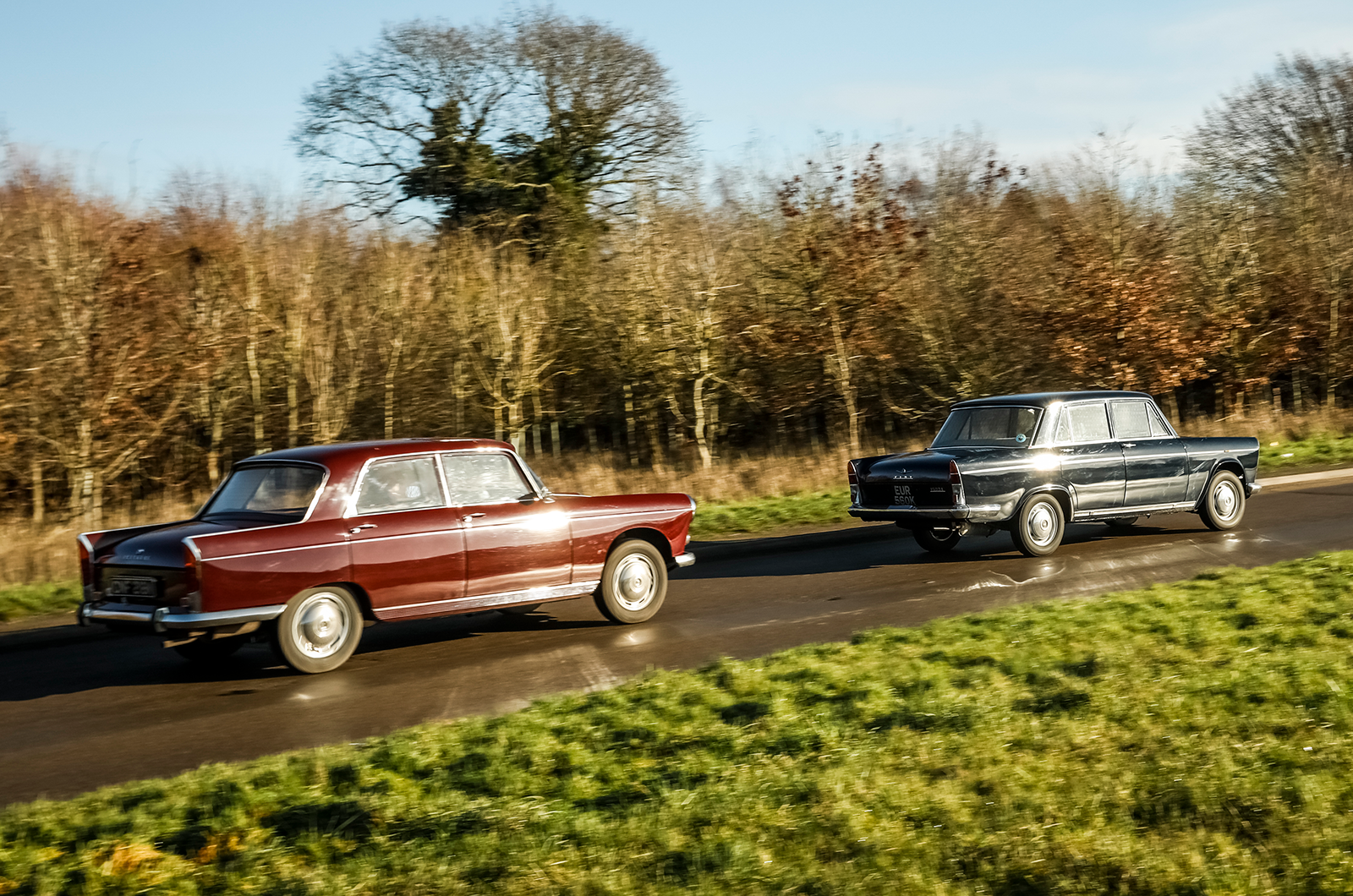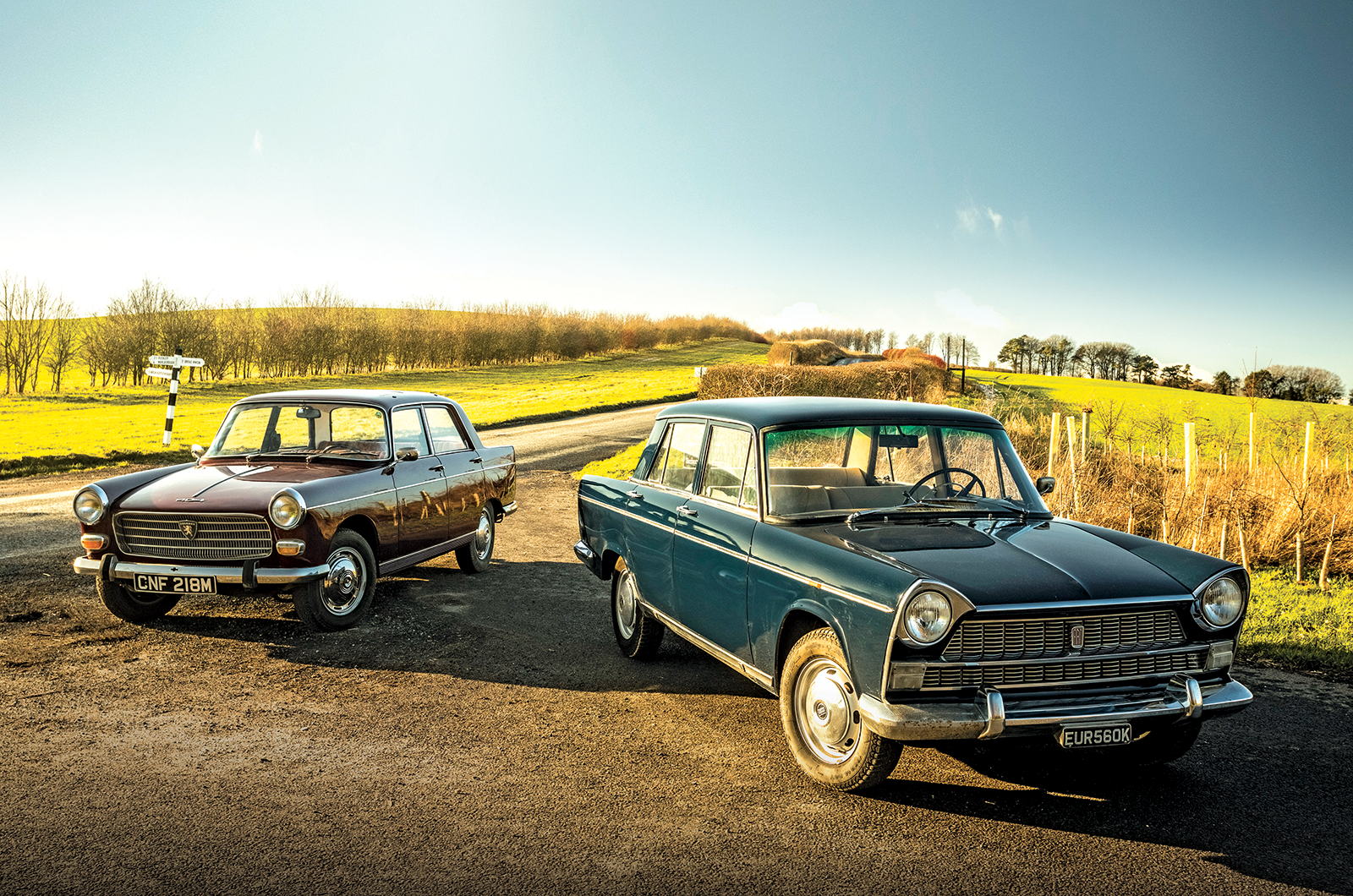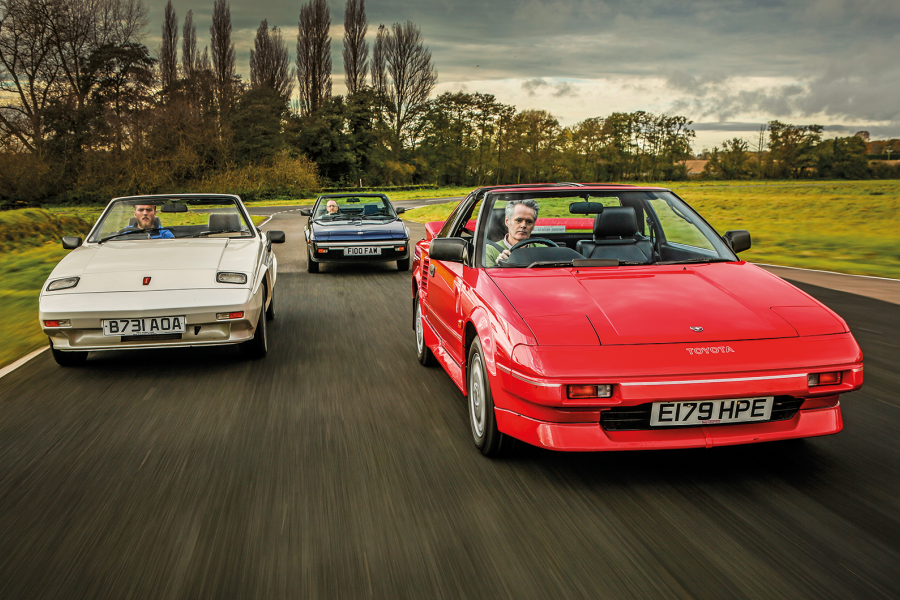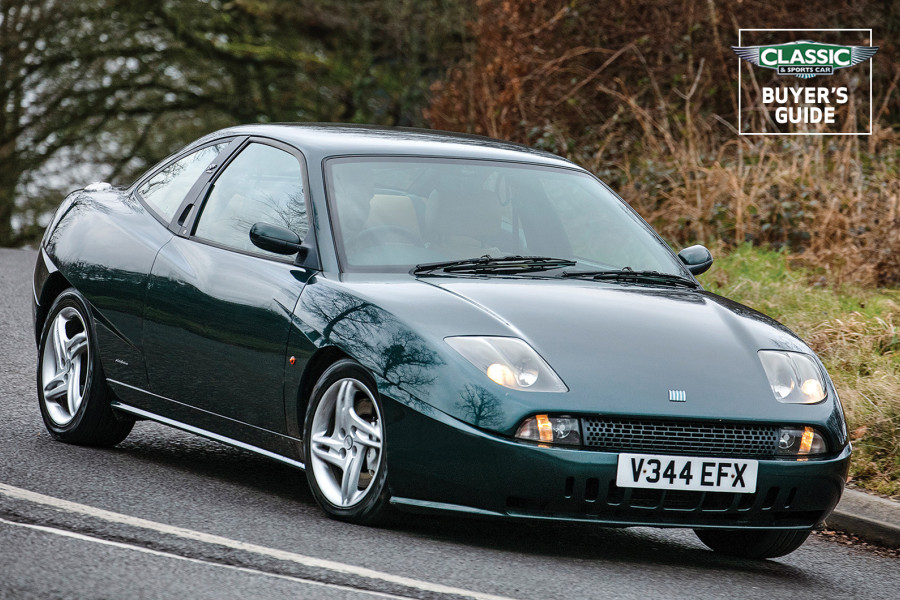It has a high rev limit that is there to be exploited, although there is no tachometer, and does not sound overstressed.
The Peugeot 404 rides well and shows a brisk turn of speed
The gentle feel of the Peugeot’s sweet, quiet engine is made more sedate in character by its smooth automatic gearbox, yet the 404 is not as slow as its relaxed demeanour suggests.
It, too, revs freely and enjoys a considerable weight advantage that allows it to canter along briskly, always very stable, on suspension that is the reverse of most others, in that the lack of road noise tends to make you believe the ride is smoother than it really is.
This is no Citroën DS, but the Peugeot’s generally supple ride easily trumps that of the rather choppy Fiat on anything but the very smoothest of roads.
Jaegar dials in the Peugeot’s simple dashboard
With square lines and low gearing, neither car makes a particularly restful cruiser in terms of engine and wind noise, although the Peugeot feels the more sophisticated of the two.
The Italian is noisier, harder work to drive and less civilised, exacerbated by – or perhaps due to – a slightly ponderous feeling that speaks to its conservative engineering.
The 1500L’s design is of the 1950s, so heftier than it needs to be in an era when unitary construction was still a relatively young technique.
The Peugeot 404’s smooth gearbox matches its relaxed character
Modern motorists would never accept its heavy low-speed steering, whereas the Peugeot lightens up nicely and has a tight lock that befits its popularity as a taxi.
While always requiring more effort than you really want to exert, the Fiat’s steering also manages to be more vague than that of the 404.
It loads up with understeer quickly, although it also corners on a reasonably even keel – as long as no bumps and potholes are encountered to knock it off line.
The 1618cc ‘four’ is almost hidden under the huge air-cleaner
The Peugeot is the more accomplished, rounded product from a company that specialised in mid-range saloons (it made pretty much nothing else until the 204 appeared in the mid-’60s) for conservative buyers who expected comfort and reliability above all else.
Fiat, in contrast, specialised in smaller cars, and it was in that realm that its engineering intellect and inventiveness was focused.
The 1500L is not a bad car, but it has the feeling of something that was built to a routine formula for a booming but uncritical market where certain buyers valued its rugged simplicity over the niceties of driver appeal and refinement.
‘The Peugeot [left] feels the more sophisticated of the two: the Italian is noisier, harder work to drive and less civilised’
As an antidote to the complexity of the Citroën DS in its home market, the Peugeot 404 showed that high levels of comfort and refinement could be achieved by quite conventional means, and it is somehow no surprise to learn that it sold to the tune of 2.8 million examples through to 1975.
Presumably today’s youngsters daub blobs-on-wheels when asked to commit an image of a car to paper; in the ’70s we all drew Peugeot 404s (even if we didn’t know it at the time) as the generic family vehicle.
My thoughts on this crystalised some years ago when somebody around my age and with no particular interest in the subject described my now long-departed 404 as “a car-shaped car”.
I think he summed up its appeal perfectly.
Images: Tony Baker
Thanks to: European Classic Cars
Factfiles
Fiat 1500L Berlina
- Sold/number built 1963-’68/200,000
- Construction steel monocoque
- Engine iron-block, alloy-head, ohv 1481cc ‘four’, single Weber carburettor
- Max power 83bhp @ 5400rpm
- Max torque 89lb ft @ 3200rpm
- Transmission four-speed manual, RWD
- Suspension: front independent, by wishbones, lower trailing links, torsion bars rear live axle, semi-elliptic leaf springs; telescopic dampers, anti-roll bar f/r
- Steering cam and roller
- Brakes discs
- Length 14ft 8¾in (4489mm)
- Width 5ft 3¾in (1619mm)
- Height 4ft 9¾in (1467mm)
- Wheelbase 8ft 8¼in (2661mm)
- Weight 2536Ib (1150kg)
- Mpg 25
- 0-60mph 17 secs
- Top speed 90mph
- Price new £1000
- Price now £6-12,000*
Peugeot 404
- Sold/number built 1960-’75/2.8m
- Construction steel monocoque
- Engine iron-block, alloy-head, ohv 1618cc ‘four’, single Solex carburettor
- Max power 76bhp @ 5500rpm
- Max torque 96lb ft @ 2500rpm
- Transmission four-speed manual or three-speed automatic, RWD
- Suspension: front independent, by lower wishbones, telescopic damper struts, anti-roll bar rear live axle, torque tube, Panhard rod, telescopic dampers; coil springs f/r
- Steering rack and pinion
- Brakes drums
- Length 14ft 6in (4420mm)
- Width 5ft 5¼in (1657mm)
- Height 4ft 9¼in (1454mm)
- Wheelbase 8ft 8in (2642mm)
- Weight 2300Ib (1043kg)
- Mpg 27
- 0-60mph 19.9 secs
- Top speed 85mph
- Price new £1200
- Price now £9-15,000*
*Prices correct at date of original publication
Enjoy more of the world’s best classic car content every month when you subscribe to C&SC – get our latest deals here
READ MORE
This is the modern world: Chrysler 2 Litre, Peugeot 504GL & Fiat 132
Buyer’s guide: Austin Cambridge & Westminster
Guilty pleasures: Fiat 127
Martin Buckley
Senior Contributor, Classic & Sports Car

